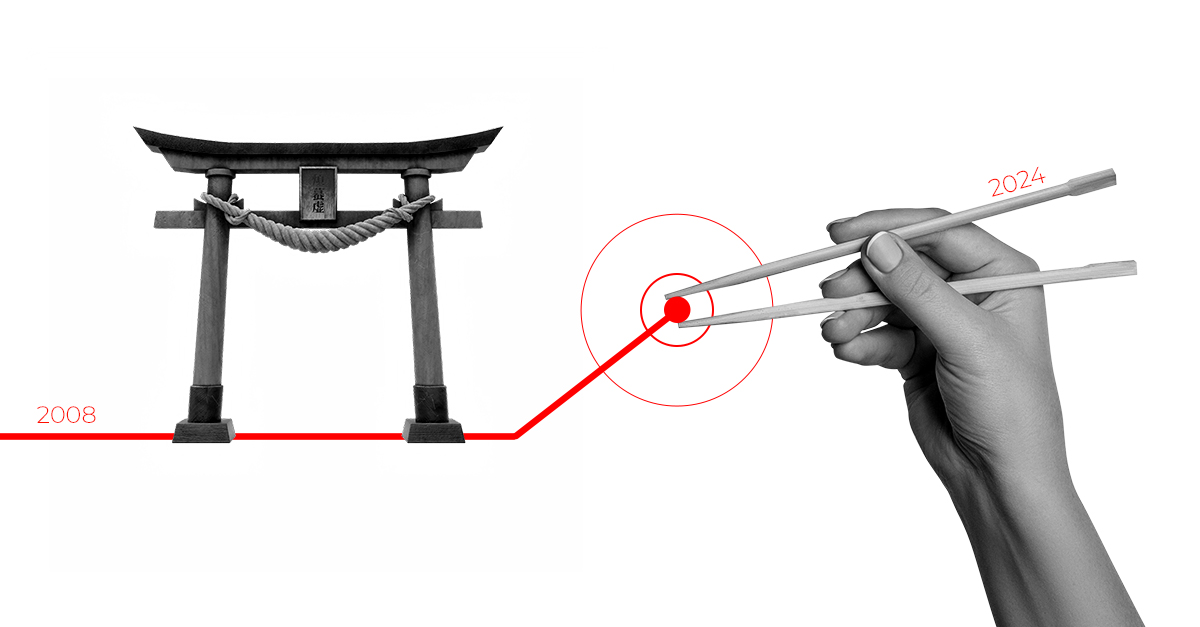Combat drones, also known as 'combat drones' or 'unmanned combat aerial vehicles (UCAVs)', could represent a breakthrough on the modern battlefield. The idea of introducing remotely controlled machines dates back to the First World War, but it is the 21st century that has brought the technology to enable their full use. Unmanned aerial vehicles are revolutionising the way military operations are conducted, enabling precision attacks without directly endangering the lives of pilots. Recently, there has been particularly much talk about Iran's Shahed drones. So let's consider how they work, what their market looks like and how you can invest in their development.
Table of contents:
- What are combat drones?
- What does the drone market look like?
- How can we invest in the development of combat drones?
What are combat drones?
In an age of increasing automation and wider access to advanced technology, combat drones are becoming increasingly important in both military and counter-terrorism operations around the world.
Iranian Shahed drones can be used for reconnaissance missions, but also for explosive attacks. The main features of their operation are:
- Reduce personnel risk: Enable combat operations without directly endangering soldiers' lives, which is particularly valuable in difficult and dangerous missions.
- Low production costs: Combat drones are much cheaper to produce than aircraft or missiles. For example, producing an Iranian Shahed-136 drone costs around $50,000, while an old-generation F-16 jet costs around $63 billion, or as much as 1,260 times more. Drones can also be an alternative to short- and medium-range missiles, whose prices range from $100,000 to $3 million.
- Slow flight speed: Combat drones have a much slower rate of movement compared to rockets and aircraft. The fastest can reach speeds of up to 7400 km/h, but most models do not exceed the speed of sound at 1224 km/h.
- Versatility of use: A major advantage is their versatility. They can be used for reconnaissance or surveillance missions as well as precision attacks. They are crucial in counter-terrorism operations, electronic warfare and humanitarian tasks such as disaster monitoring, among others.
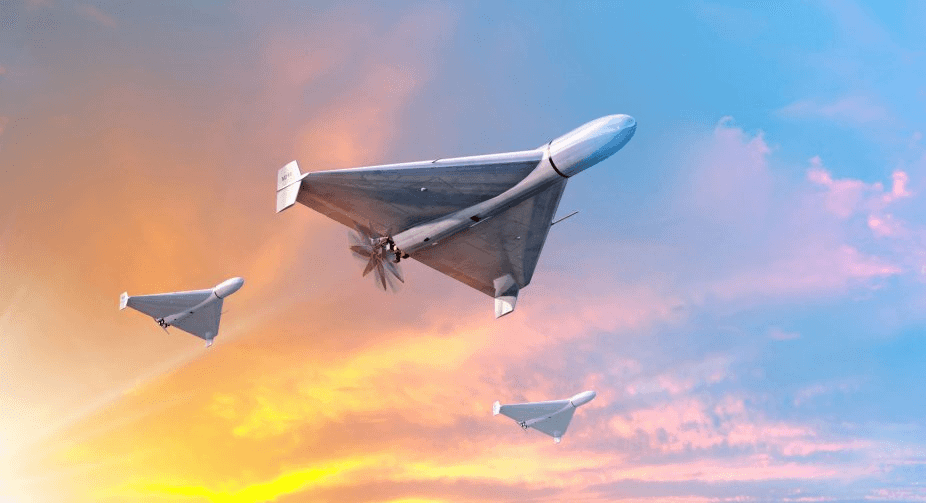
Source: Front news, Shahed Drone
What does the drone market look like?
From the latest 'Unmanned Combat Air Vehicles (UCAV) Market' report, we know that the market is valued at USD 26.2 billion in 2024. In turn, it is expected to reach USD 38.3 billion by 2027, with a compound annual growth rate (CAGR) of 7.9%.
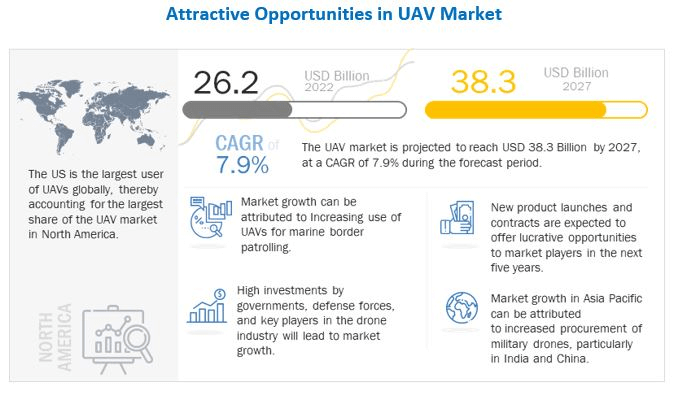
Source: MarketsAndMarkets
Demand for UCAVs is being driven by their increasing use in advanced military operations, their cost-effectiveness in monitoring contested borders and enhancing security. Significant investment in research and development by the US, Russia, China and other countries is driving the growth of the industry, with a focus on deploying large numbers of UCAVs to increase military effectiveness.
Regional analysis in the report indicates that the Asia-Pacific region accounted for a significant market share in 2023, with North America expected to grow the fastest during the indicated forecast period.
How can we invest in the development of combat drones?
The US is a leader in the development and use of UCAVs, with models such as the MQ-9 Reaper and MQ-1 Predator that have been used extensively in conflicts around the world. US UCAV technology is among the most advanced. Examples of major companies in the industry include:
- BAE Systems: A UK-based defence and aerospace company that develops and manufactures a variety of unmanned systems for both military and civilian purposes. The drone models it produces include: Taranis, Mantis, Herti or PHASA-35. Over the past 12 months, its shares have gained 8%.
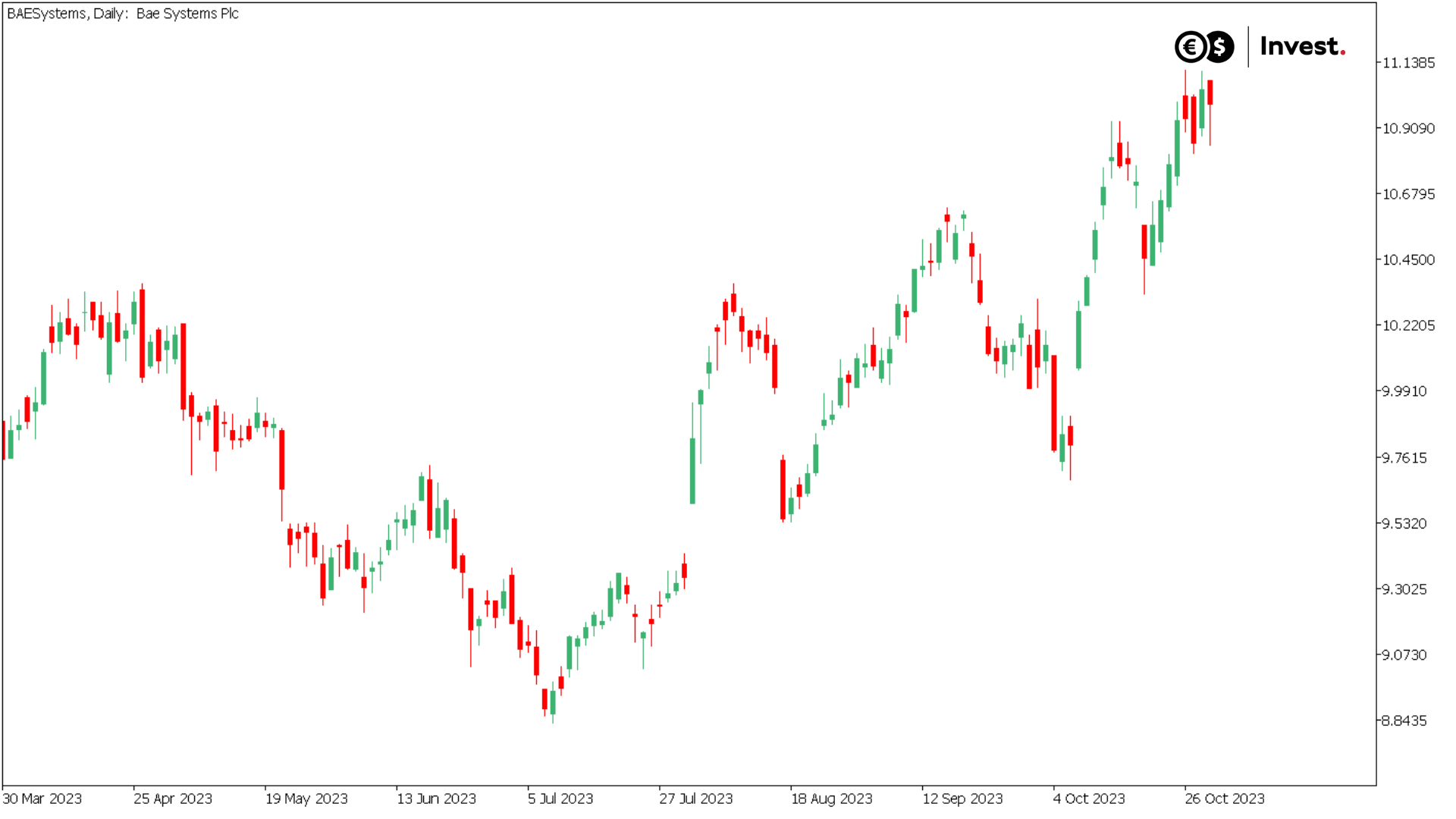
Source: Conotoxia MT5, BAESystems, Daily
- Boeing: A US aerospace and defence corporation that designs, manufactures and sells aircraft, satellites, defence systems and advanced technologies, including unmanned aerial vehicles. Among the drone models that Boeing produces are: ScanEagle, Phantom Eye and MQ-25 Stingray. Over the past 12 months, Boeing's shares have lost 17% of their value despite the favourable economic environment and are now at their two-year lows.
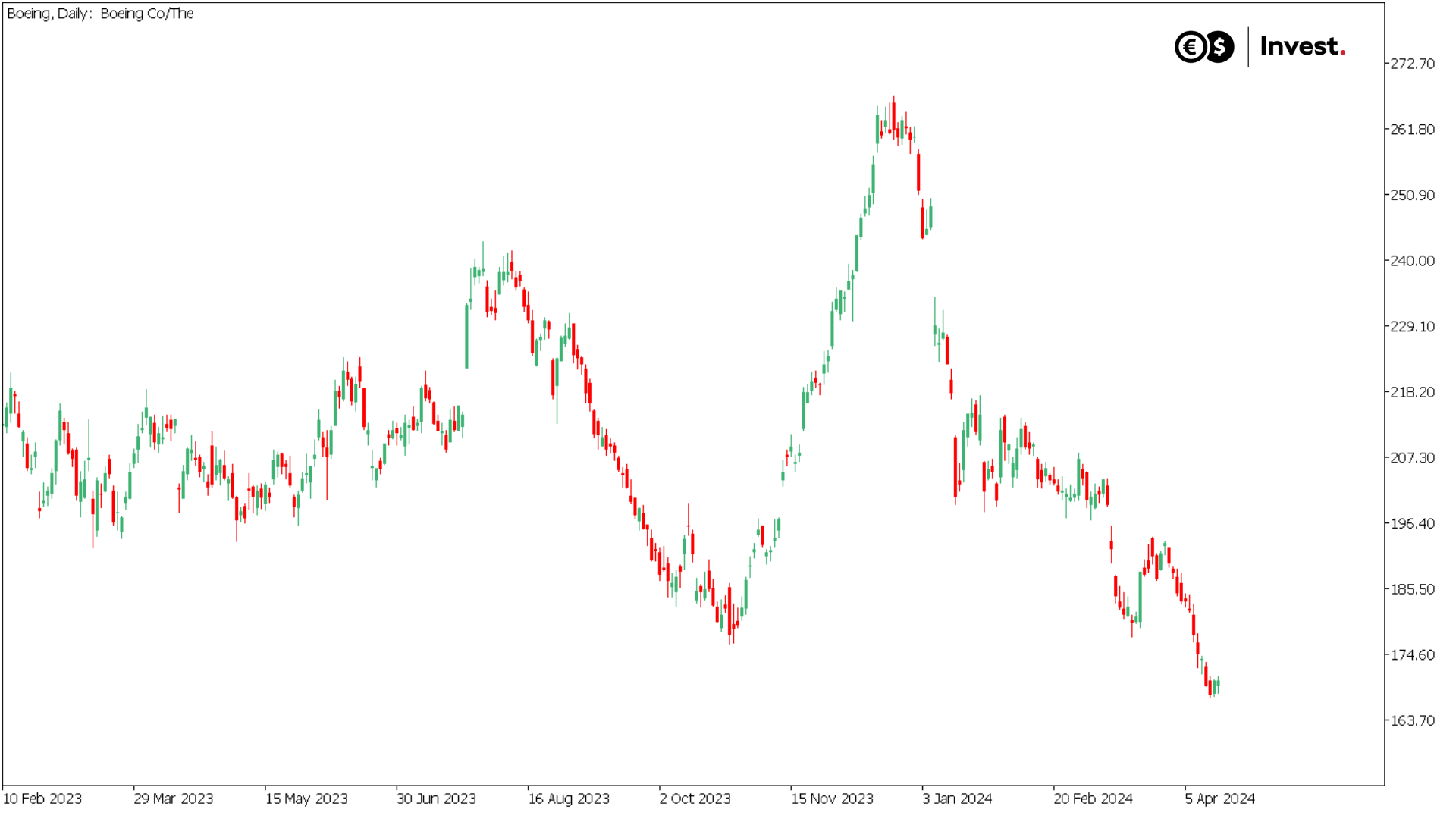
Source: Conotoxia MT5, Boeing, Daily
- Lockheed Martin: A US-based defence and technology corporation that is one of the world's largest manufacturers in the aerospace and security industries. The company designs and manufactures advanced aerospace systems, including drones, which are used in both the military and civilian sectors. Drone models manufactured by Lockheed Martin include: RQ-170 Sentinel, MQ-25 Stingray and the Fury series. Over the past 12 months, Lockheed Martin shares have not performed well, losing 7% of their value.
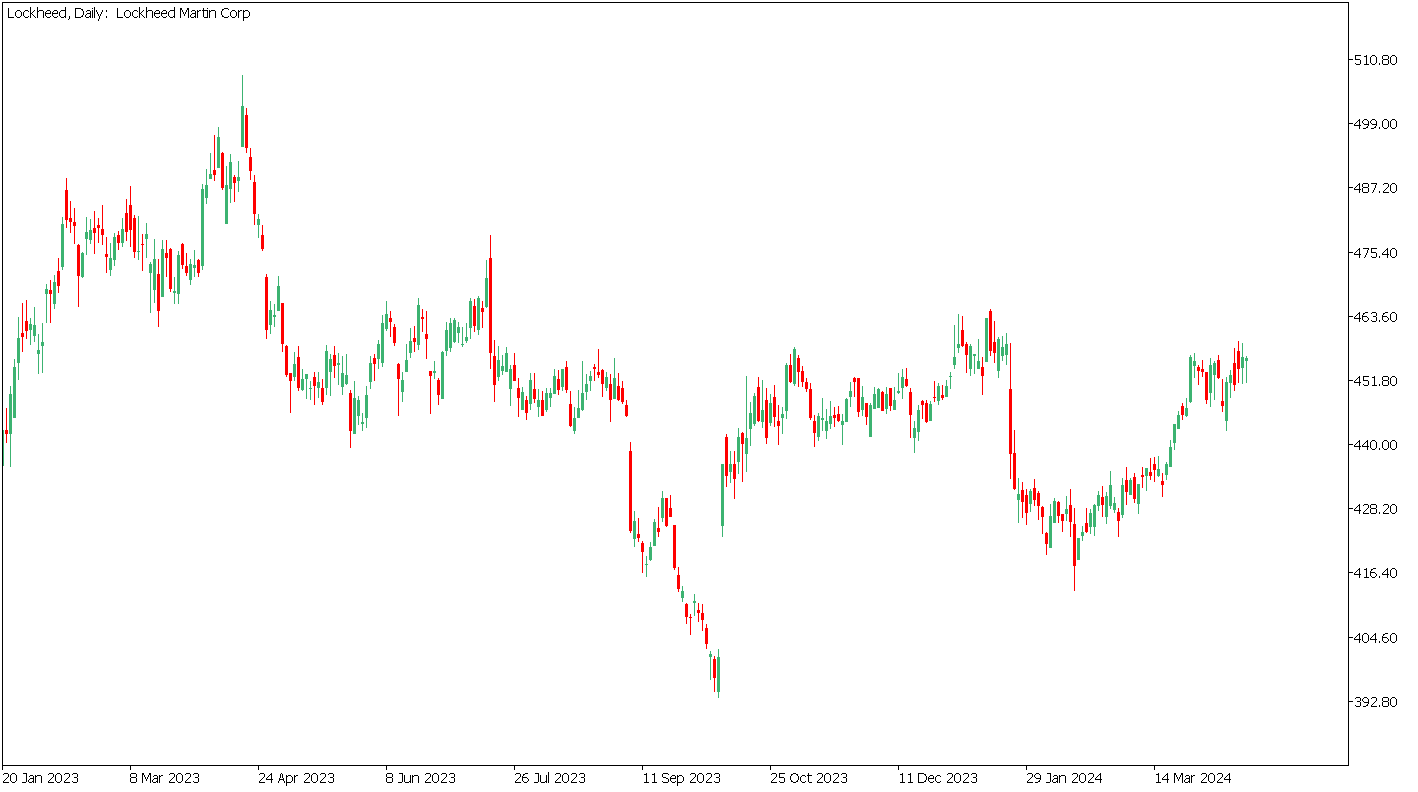
Source: Conotoxia MT5, Lockheed, Daily
Combat drones, known as UCAVs, are playing an increasingly important role on the modern battlefield due to their ability to carry out precision attacks without directly endangering the lives of pilots. Iran's Shahed drones, used for both reconnaissance and attack missions, exemplify the growing role of these devices in military operations. They are characterised by their low production costs, slow flight rate and versatility, making them effective in operations. Despite the growing importance of drone technology, with sales projected to grow by 7.9% annually, the IShares US Aerospace & Defence index of defence stocks, including combat drone manufacturers, is down 8% over the past 12 months. It appears that in the event of an escalation in the conflict between Israel and Iran, defence companies could become much more important globally.
Grzegorz Dróżdż, CAI MPW, Market Analyst of Conotoxia Ltd. (Conotoxia investment service)
Materials, analysis and opinions contained, referenced or provided herein are intended solely for informational and educational purposes. Personal opinion of the author does not represent and should not be constructed as a statement or an investment advice made by Conotoxia Ltd. All indiscriminate reliance on illustrative or informational materials may lead to losses. Past performance is not a reliable indicator of future results.
CFDs are complex instruments and come with a high risk of losing money rapidly due to leverage. 71,48% of retail investor accounts lose money when trading CFDs with this provider. You should consider whether you understand how CFDs work and whether you can afford to take the high risk of losing your money.







